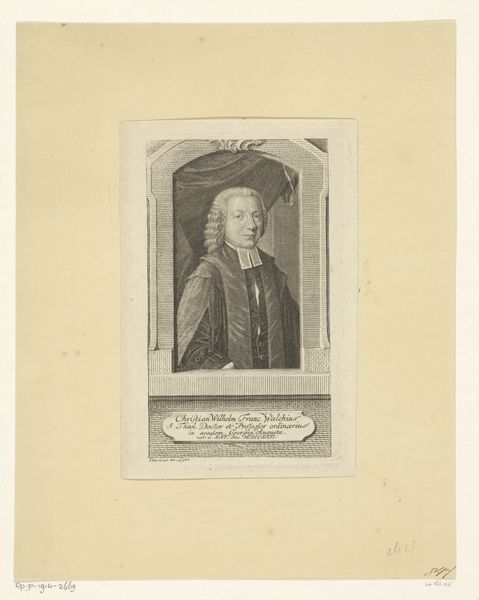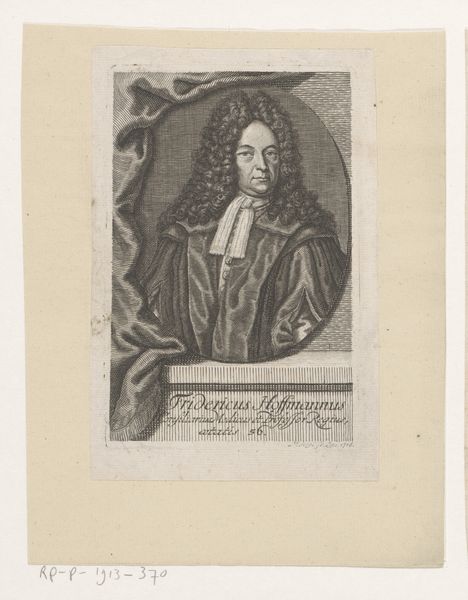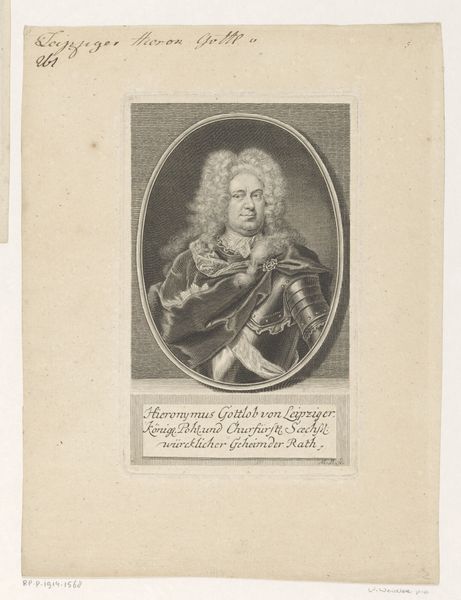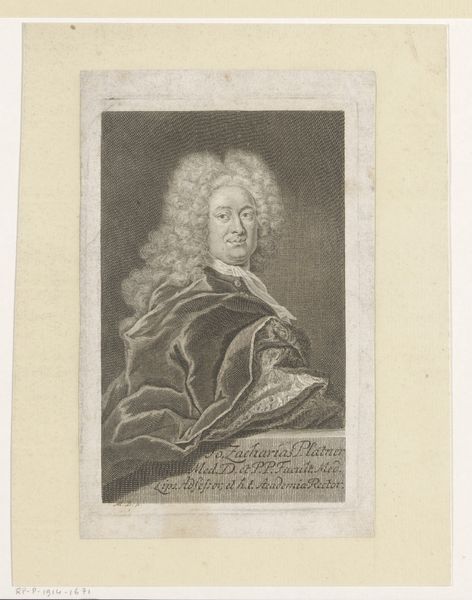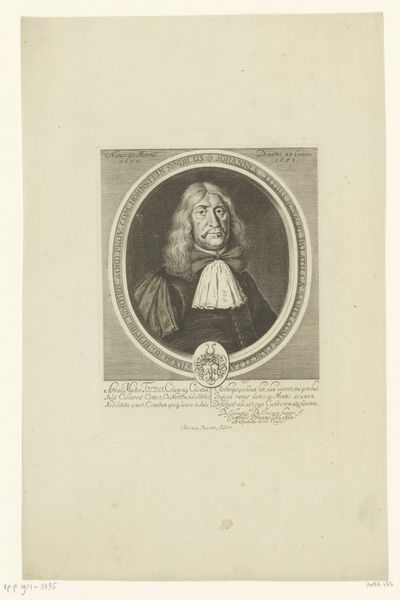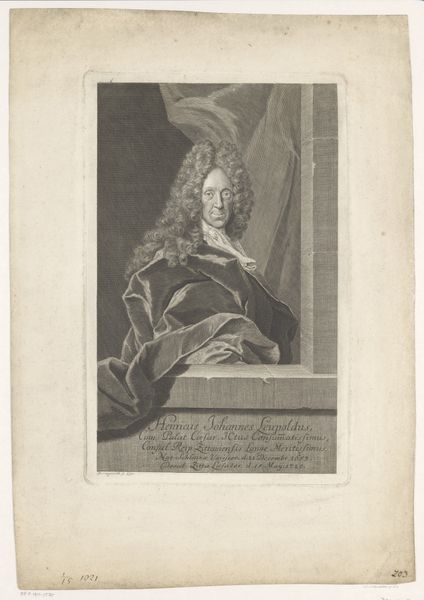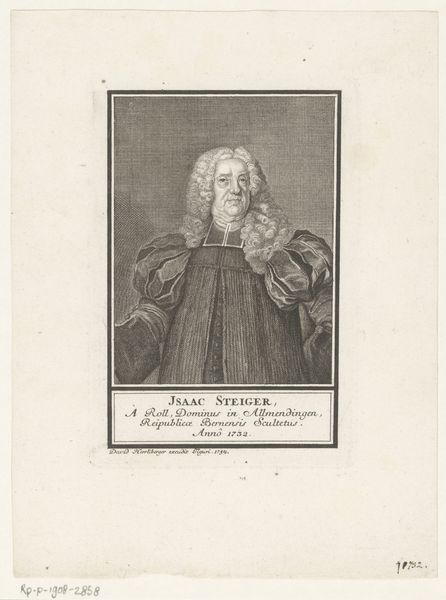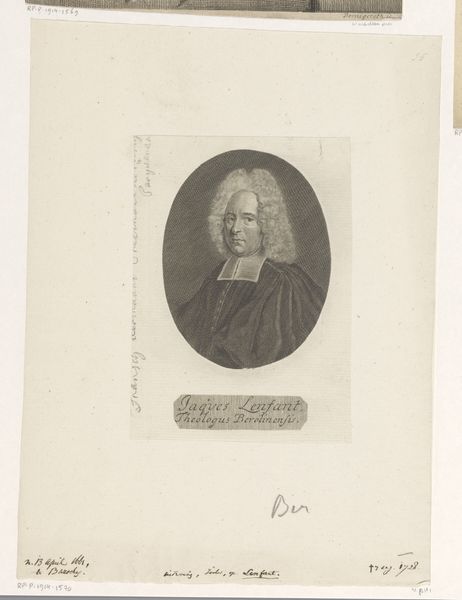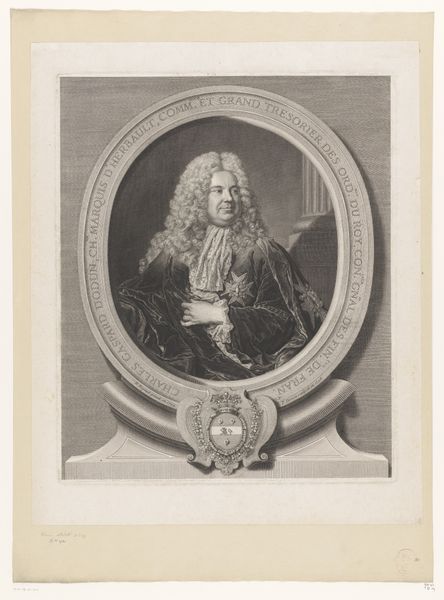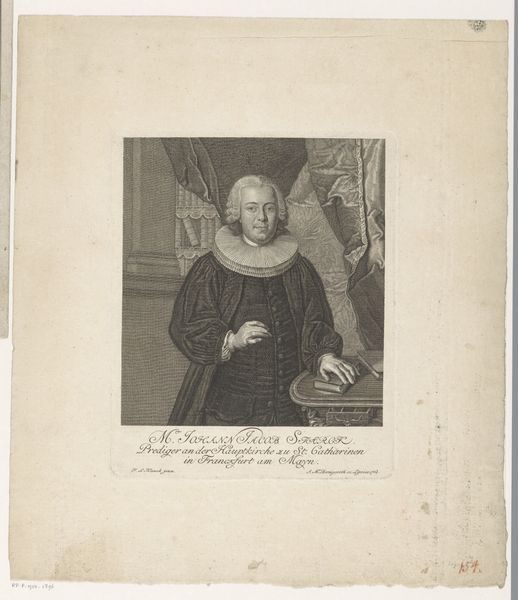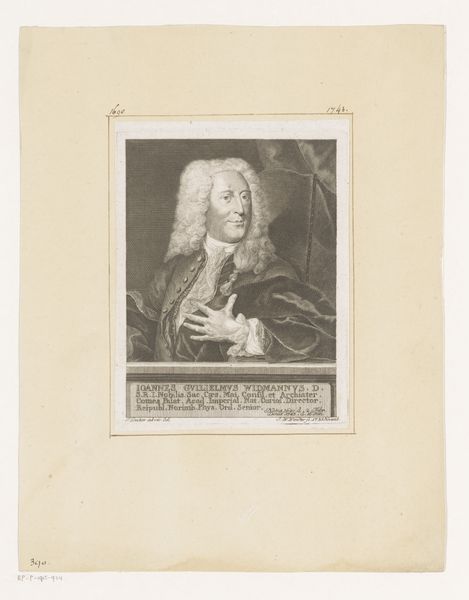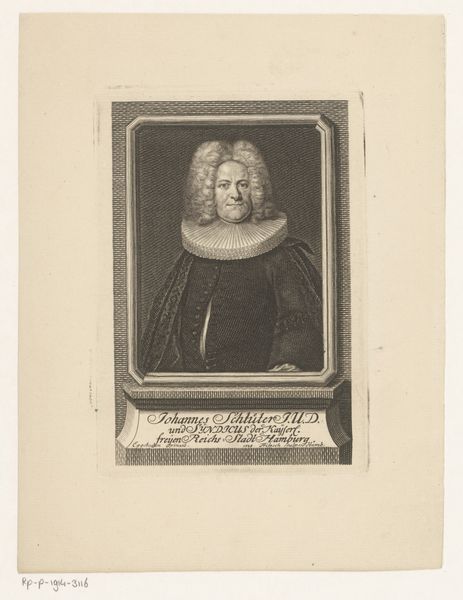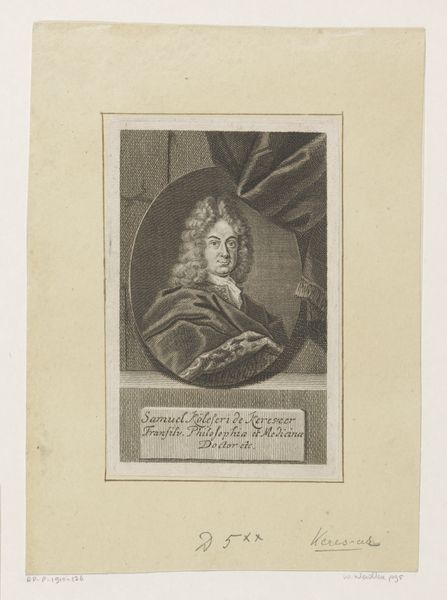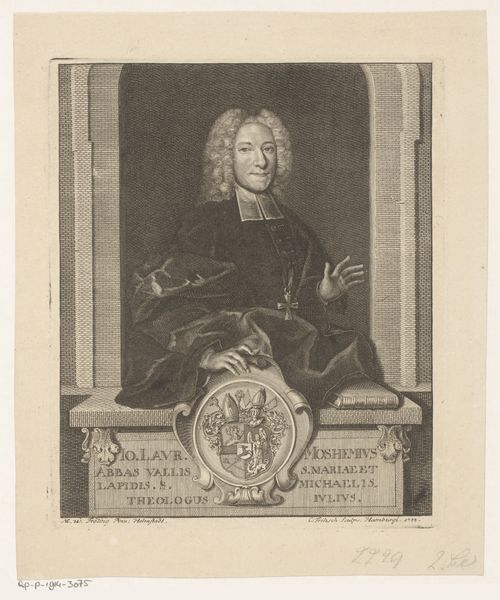
Dimensions: height 165 mm, width 117 mm
Copyright: Rijks Museum: Open Domain
Curator: Here we have Johann Rudolph Holzhalb's print depicting "Portret van August Johann Buxtorf," made sometime between 1745 and 1808. It’s an engraving. Editor: There’s a somber quality to this piece. The composition feels carefully arranged to contain and emphasize a sort of reserved authority. It seems self-aware and very mannered, almost theatrical. Curator: Well, he *was* a pastor and theologian! And he’s holding what appears to be a substantial book. The black robe and elaborate white ruff seem typical for depictions of religious figures in this era, wouldn’t you say? It reinforces the iconography of intellect and authority. Editor: Absolutely. The lines of the engraving, though, seem more intricate in the rendering of the clothing than in the face, perhaps suggesting more focus on the sitter's role or position within society, which echoes through the patterned background as well. Curator: That patterned background acts as a sort of symbolic field, framing Buxtorf as part of an enduring structure, whether the Church or perhaps the larger framework of theological scholarship. It is not just about him, but the context. Editor: True, but I wonder if emphasizing the detail in those less crucial areas might subtly undermine him. By drawing focus to the details in areas *surrounding* the subject, it shifts the emotional impact from Buxtorf himself and toward what he *represents*, flattening the potential depth of the portrait overall. It highlights structure over character. Curator: That’s an intriguing point, and one I had not considered. Perhaps the portrait acts more as a statement on theological lineage rather than individual accomplishment, placing Buxtorf within a continuum. Editor: Exactly. Thinking about the Baroque period, you can see how that stylistic tendency might reinforce those larger philosophical concerns. It creates this interplay of person, structure, and environment. Curator: I see your perspective, and this conversation helps appreciate its function as cultural document, beyond simple representation. Thank you. Editor: And thank you for illuminating the nuances in what could have been merely a study in composition.
Comments
No comments
Be the first to comment and join the conversation on the ultimate creative platform.
